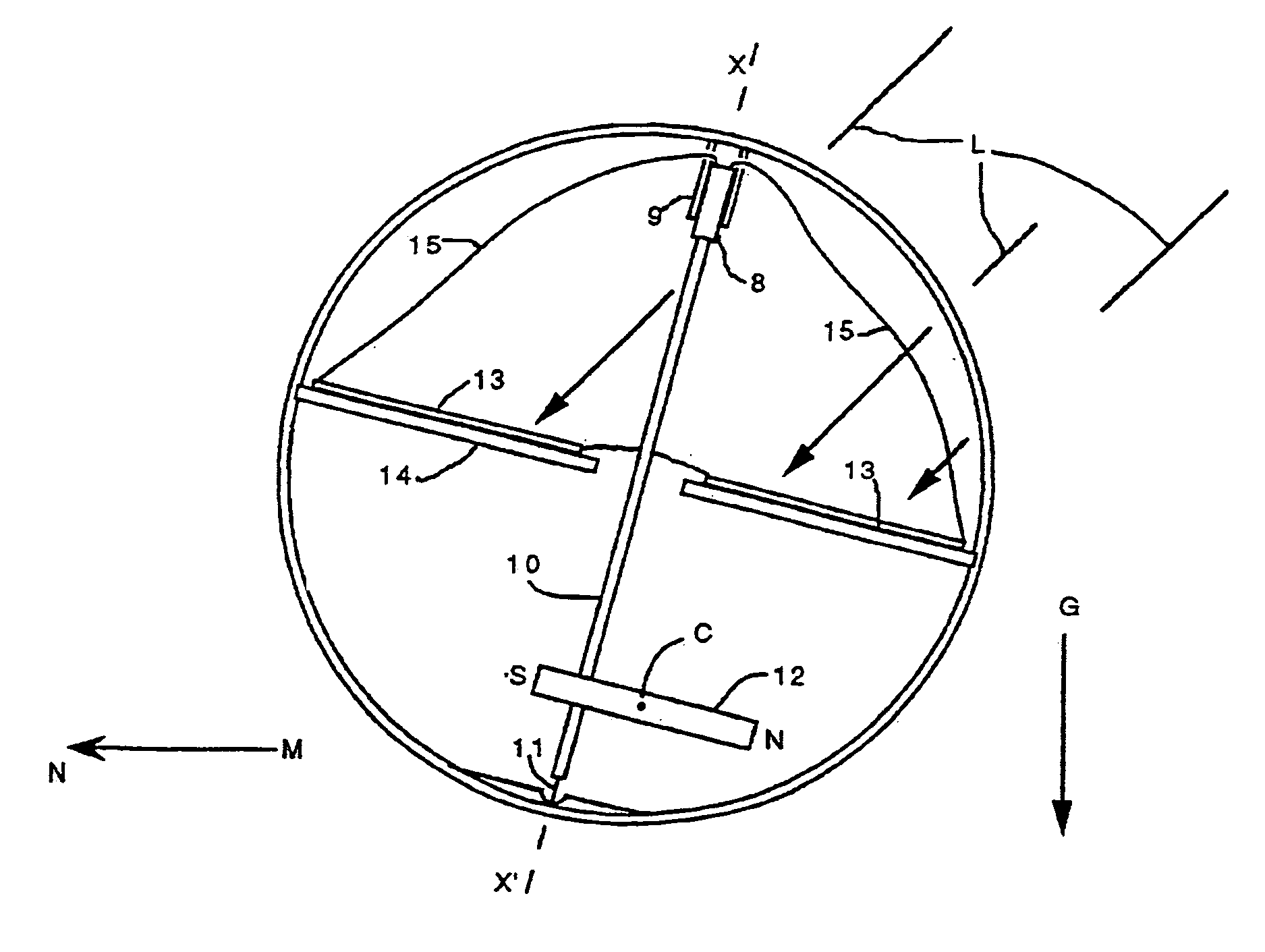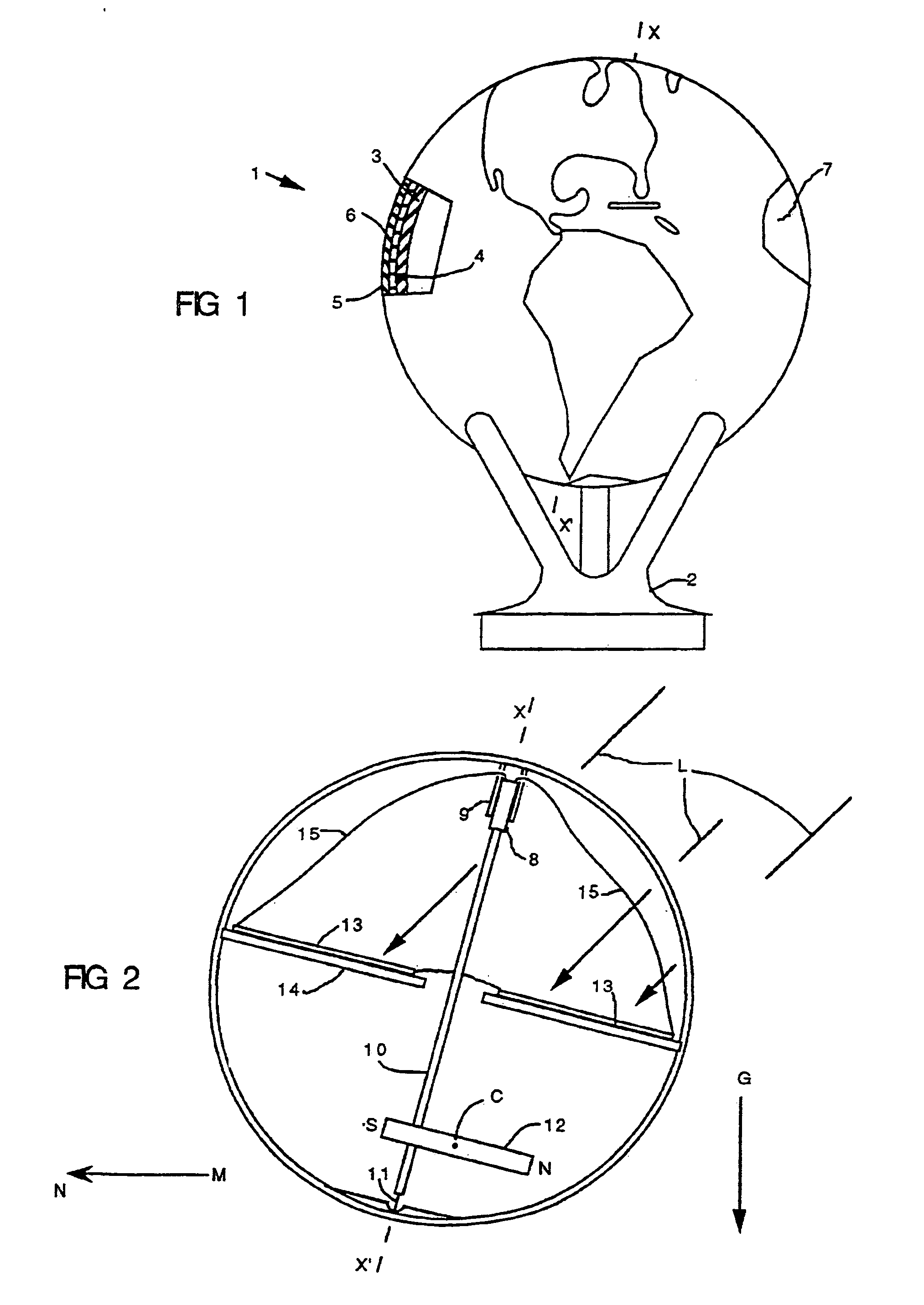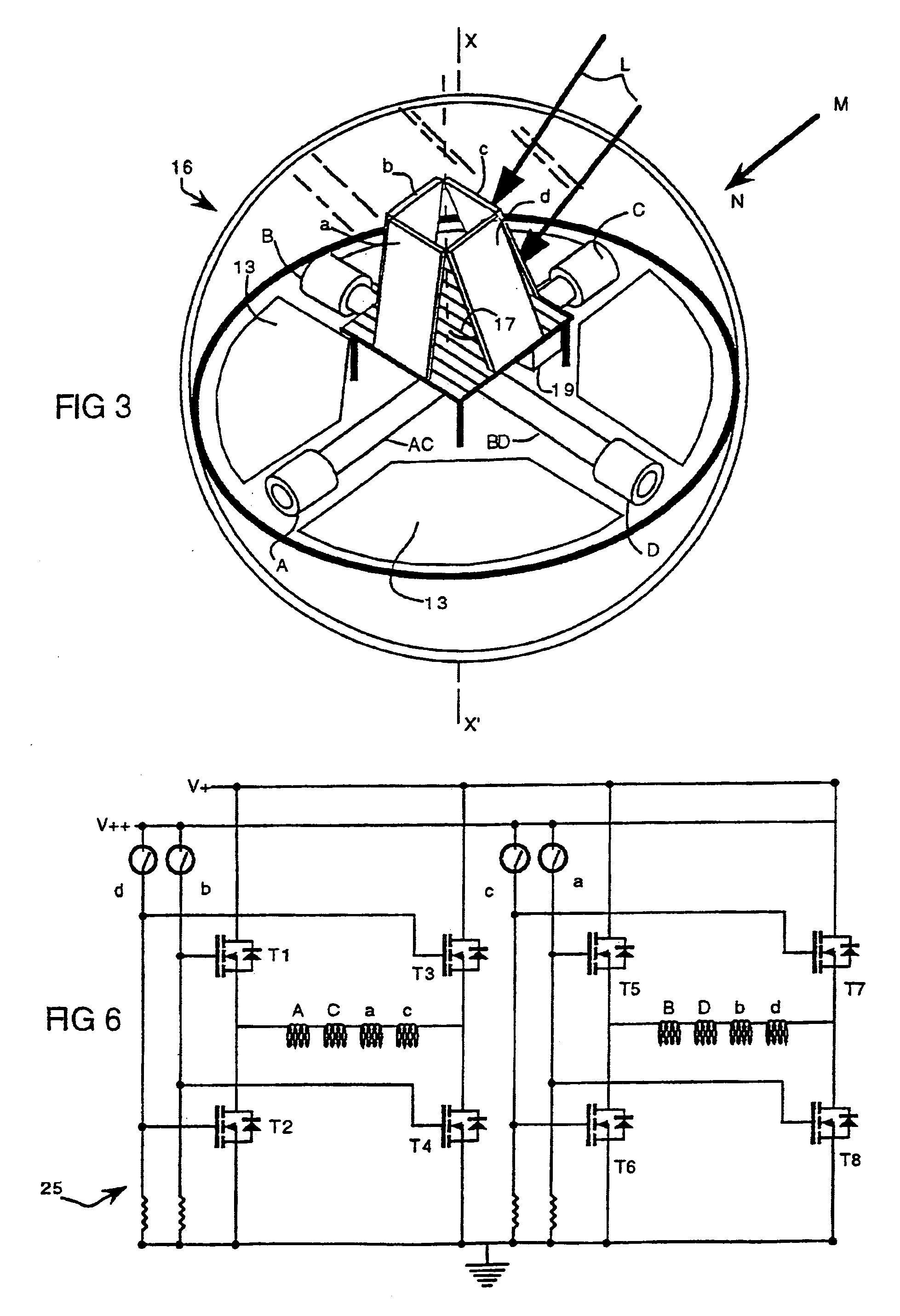Self rotating display spherical device
a display device and self-rotating technology, applied in the field of self-rotating and self-powered display devices, can solve the problems of consuming a great deal of electrical power, complex and bulky counter-torque-producing mechanisms, and most prior embodiments that are not totally free of external connection
- Summary
- Abstract
- Description
- Claims
- Application Information
AI Technical Summary
Benefits of technology
Problems solved by technology
Method used
Image
Examples
first embodiment
[0027]Referring now to the drawing, there is shown in FIGS. 1 and 2 the invention in the form of a globe 1 which rests on a three-pronged support 2. The globe comprises a spherical, closed and sealed enclosure 3 made of two hemispheric shells of acrylic glued together along an equatorial seam 4. The enclosure 3 is concentrically surrounded by a spherical container 5 preferably made of transparent acrylic in the same manner as the enclosure 3. The enclosure 3 and the container 5 are separated by a small space filled with a liquid 6 so that the enclosure 3 is supported and surrounded by the liquid 6, and can spin upon itself about an axis X–X′ independently of the container 5. Painted or etched upon the outer surface of the enclosure 3 is a graphic design, in this case, a map of the world 7. The weight of the enclosure is appropriately distributed to place the structure in the desired orientation.
[0028]The enclosure 3 is preferably translucent. In other words, it is permeable to light...
embodiment 16
[0032]The first alternate embodiment 16 of the drive mechanism illustrated in FIG. 3, relies on a known relationship between the orientation of an ambient magnetic field and the direction of another ambient field of energy such as another magnetic field, a field of radio waves or, as more specifically taught in this embodiment, a field of light waves impinging upon the enclosure. The enclosure spinning torque is derived from the earth magnetic field M and the directional bearing locator function is achieved by sensing the direction of the light waves L. The electrical motor is constituted by two electromagnets AC and BD positioned on the equatorial septum 14 in a cross-array wherein each electromagnet is oriented radially from the axis of rotation X–X′. Four photosensors a, b, and d are mounted in a pyramidal configuration wherein the photo-sensitive surface of each sensor lies in a different plane than the plane in which the photo-sensitive surface of any one of the other sensors l...
embodiment 30
[0051]In a fourth alternate embodiment 30 of the drive mechanism illustrated in FIGS. 9 and 10, the magnet 21 acts as the directional bearing locator and the photovoltaic collector 13, and is rotatively mounted on a central axle 10. The axle, as well as the equatorial septum 14, are fixedly attached to the enclosure 3. A set of four ring segments a, b, c and d are mounted proximate the top surface of the axle in a cross-array configuration. As the enclosure spins about axis X–X′ which is coincident with the axle 10, a pair of brushes 18 are used to enable the cross-array of electromagnets A, B, C and D in a similar manner as was disclosed in connection with the previously described embodiments. The sequential and alternate distribution of the feeding current to the electromagnets including their polarity commutation are accomplished according the techniques well known to those with ordinary skill in the art.
[0052]It should be understood that the directional bearing locator of the fi...
PUM
 Login to View More
Login to View More Abstract
Description
Claims
Application Information
 Login to View More
Login to View More - R&D
- Intellectual Property
- Life Sciences
- Materials
- Tech Scout
- Unparalleled Data Quality
- Higher Quality Content
- 60% Fewer Hallucinations
Browse by: Latest US Patents, China's latest patents, Technical Efficacy Thesaurus, Application Domain, Technology Topic, Popular Technical Reports.
© 2025 PatSnap. All rights reserved.Legal|Privacy policy|Modern Slavery Act Transparency Statement|Sitemap|About US| Contact US: help@patsnap.com



